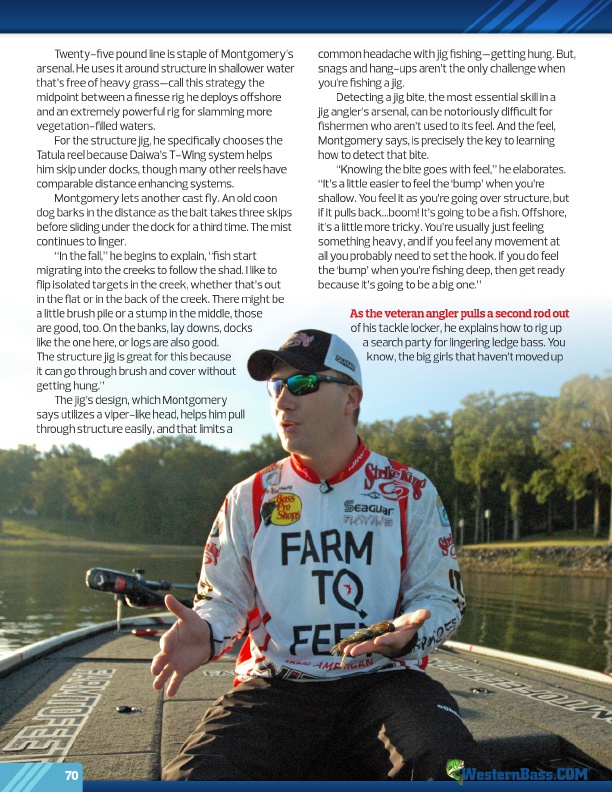
Twenty-five pound line is staple of Montgomery’s arsenal. He uses it around structure in shallower water that’s free of heavy grass—call this strategy the midpoint between a finesse rig he deploys offshore and an extremely powerful rig for slamming more vegetation-filled waters.
For the structure jig, he specifically chooses the Tatula reel because Daiwa’s T-Wing system helps him skip under docks, though many other reels have comparable distance enhancing systems.
Montgomery lets another cast fly. An old coon dog barks in the distance as the bait takes three skips before sliding under the dock for a third time. The mist continues to linger.
“In the fall,” he begins to explain, “fish start migrating into the creeks to follow the shad. I like to flip isolated targets in the creek, whether that’s out in the flat or in the back of the creek. There might be a little brush pile or a stump in the middle, those are good, too. On the banks, lay downs, docks like the one here, or logs are also good. The structure jig is great for this because it can go through brush and cover without getting hung.”
The jig’s design, which Montgomery says utilizes a viper-like head, helps him pull through structure easily, and that limits a
common headache with jig fishing—getting hung. But, snags and hang-ups aren’t the only challenge when you’re fishing a jig.
Detecting a jig bite, the most essential skill in a jig angler’s arsenal, can be notoriously difficult for fishermen who aren’t used to its feel. And the feel, Montgomery says, is precisely the key to learning how to detect that bite.
“Knowing the bite goes with feel,” he elaborates. “It’s a little easier to feel the ‘bump’ when you’re shallow. You feel it as you’re going over structure, but if it pulls back…boom! It’s going to be a fish. Offshore, it’s a little more tricky. You’re usually just feeling something heavy, and if you feel any movement at all you probably need to set the hook. If you do feel the ‘bump’ when you’re fishing deep, then get ready because it’s going to be a big one.”
As the veteran angler pulls a second rod out of his tackle locker, he explains how to rig up
a search party for lingering ledge bass. You
know, the big girls that haven’t moved up
70 ®